Winter landscaping ideas: 10 enchanting looks for the coldest months of the year
Keep your space looking beautiful with these winter landscaping ideas – from pretty planting to cozy seating spaces
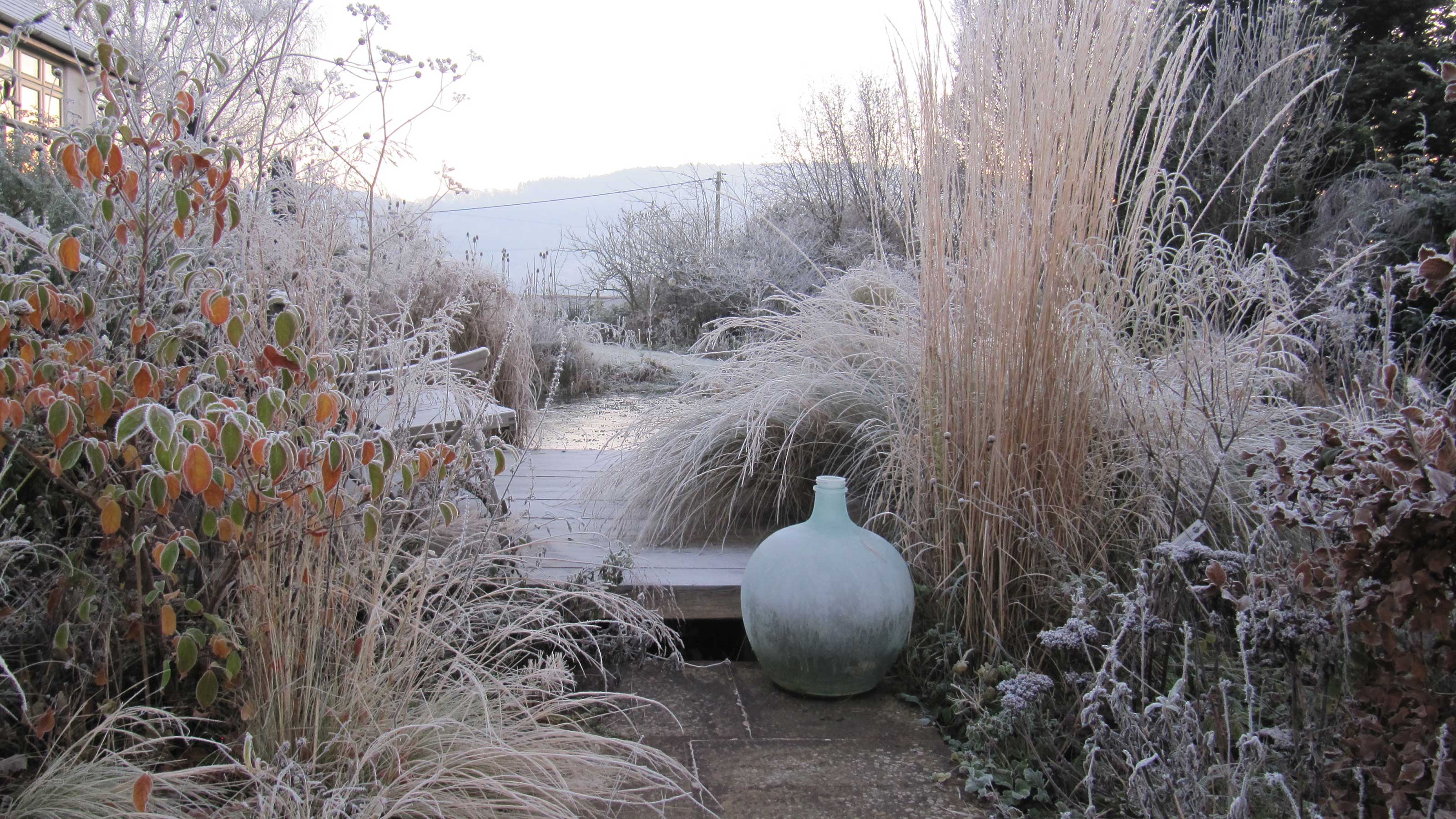

The best winter landscaping ideas will keep your plot looking gorgeous all through the cooler seasons. But if you're not sure where to start, or looking for a dose of inspiration, we're here to help.
Generally, it's the summer and spring garden that gets the most attention, what with the profusion of blooms, the masses of greenery, and the balmy weather fit for alfresco dining and lounging. But there's no reason to overlook winter garden ideas. At this time of year, the beauty of an outdoor space can be breathtaking, if it's designed well.
All it takes is a little creativity, know-how, and a careful selection of plants, materials, and forms, to create a space that will hold its own over the winter months. We're talking vivid color, cozy seating areas, eye-catching focal points, and more. And we've rounded up some of our favorite looks to demonstrate.
10 winter landscaping ideas to transform your garden
There's something for everyone in our pick of winter landscaping ideas, so get ready to be inspired.
1. Draw the eye with focal points
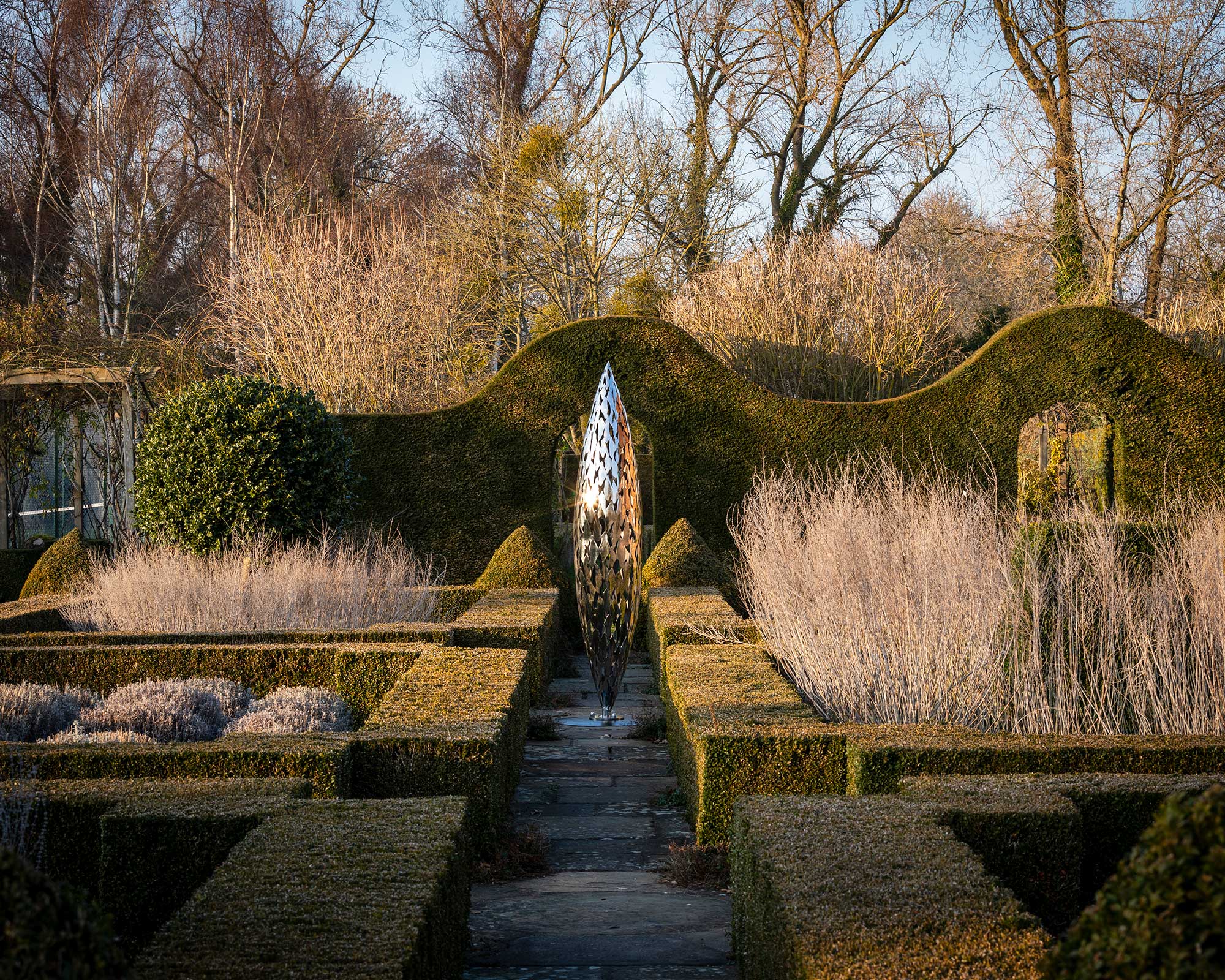
David Harber's Quill sculpture looks stunning in this space
'Embellishing the garden with additional decoration creates an interesting juxtaposition between evolving nature and an aesthetic frozen in time,' comments sculptor David Harber.
'Decorative items can both harmonize with their immediate surroundings in tone, texture and form or, indeed, create a striking contrast.'
For example, a bright, bold reflective metal piece will both mirror its immediate environment and effectively borrow character and charm from the planting and landscaping surrounding it, David continues. Take this beautiful design, for instance, which will hold any onlooker's attention.
A sculpture will be just as beautiful whatever the time of year, but in winter it can be especially stunning against a quieter backdrop. Try positioning one at the end of a pathway, in the center of a lawn, or tucked amongst a border. We love how the clipped evergreen hedges in this garden add to the scene too, with their pleasingly symmetrical structure.
2. Add color to borders with beautiful bark
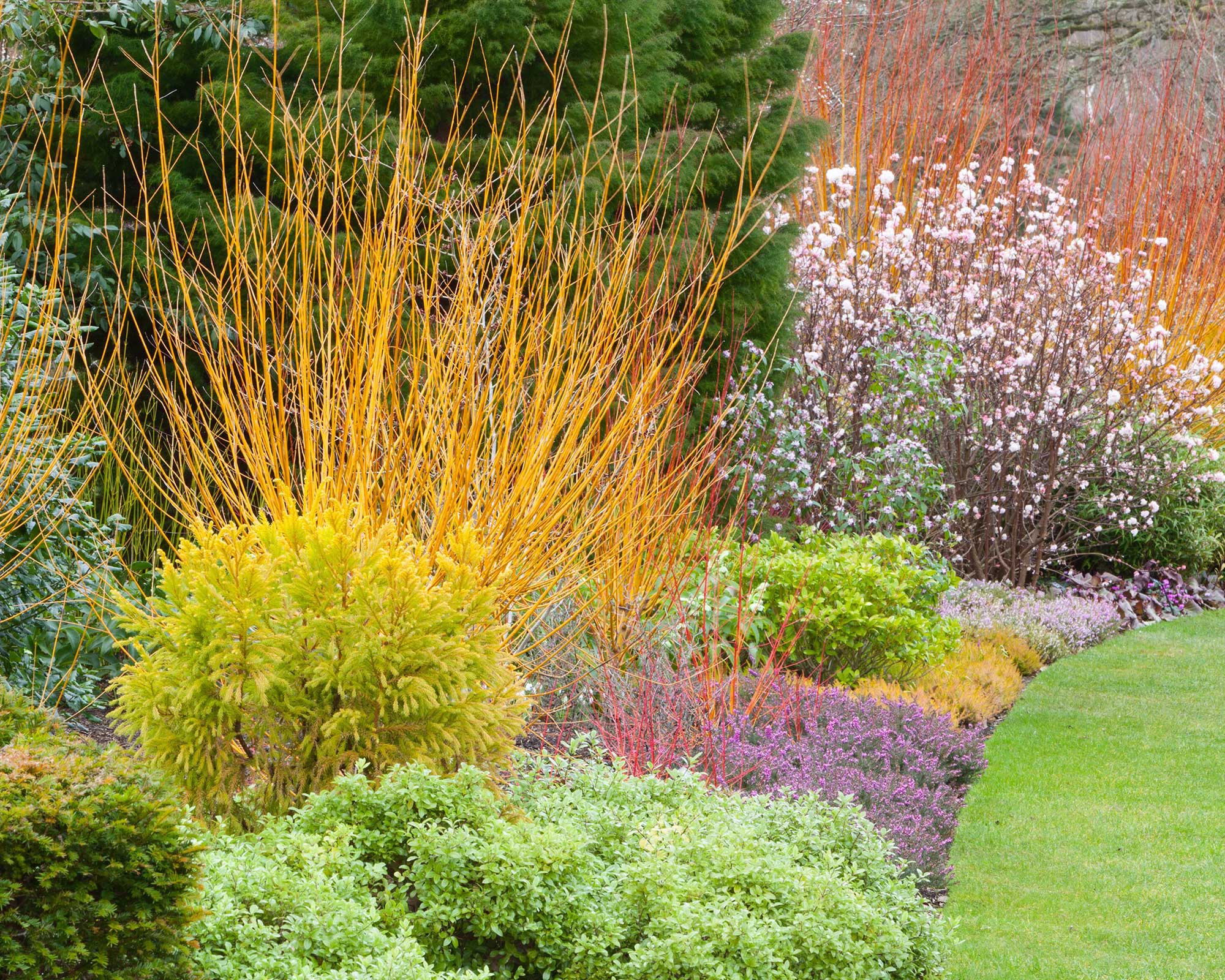
The Winter Walk at RHS Garden Harlow Carr
Deciduous trees and shrubs drop their leaves in winter, but some reveal vibrantly colorful bark which is a feature all in itself.
Cornus sanguinea 'Midwinter Fire' is one of the best, offering stems in a shade as hot-hued and vibrant as the name suggests. Meanwhile, the branches of Cornus alba 'Kesselringii' are a deep red in autumn, turning to an inky purple-black which can look particularly striking in a contemporary plot. Plant them along the back of borders amongst winter blooms and smaller evergreen shrubs for a beautiful display.
And if you're after something larger, scarlet willow is a lovely choice that will bring a bright splash of orange to the garden. You can find more top picks for plants with attractive winter bark in our guide.
3. Install an all-weather deck
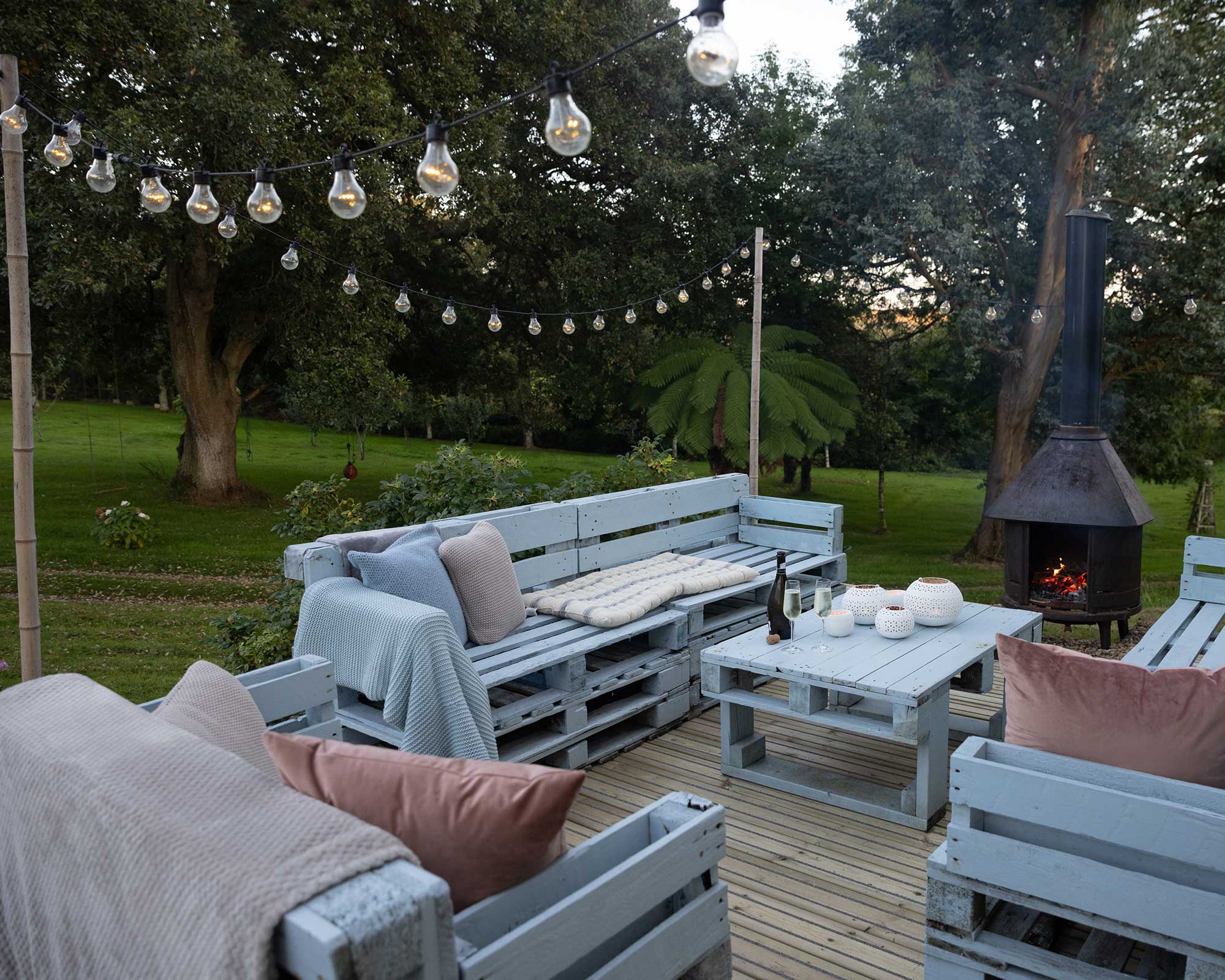
A cozy outdoor living space featuring non-slip decking from Gripsure
'As the nights draw in and cloudy skies bring more rain, most of us spend less time in our gardens,' says the team at Gripsure. 'But, it doesn't have to become a no-go zone. A fantastic way to make the most of your outdoor space during winter is by installing non-slip decking.
'Decking is a great way to create an extension to your own living space, bringing the indoors out. Whether you want to add space for outdoor entertaining, a kids' play area, or a relaxing spot, decking is quick, easy and versatile.
'Rain, ice and algae can all make traditional timber and composite decking dangerously slippery. By choosing non-slip decking, you can create a deck that stays safe, whatever the weather,' the team continues. Look for a style that includes aggregate anti-slip inserts. That way, even when the ground is wet or icy, you can enjoy your deck without the fear of slipping.
Add one of the best chimineas nearby to keep everyone warm, twinkling lights overhead, and seating laden with cushions and you'll have a cozy outdoor zone to enjoy whatever the season.
4. Add form with evergreen shrubs
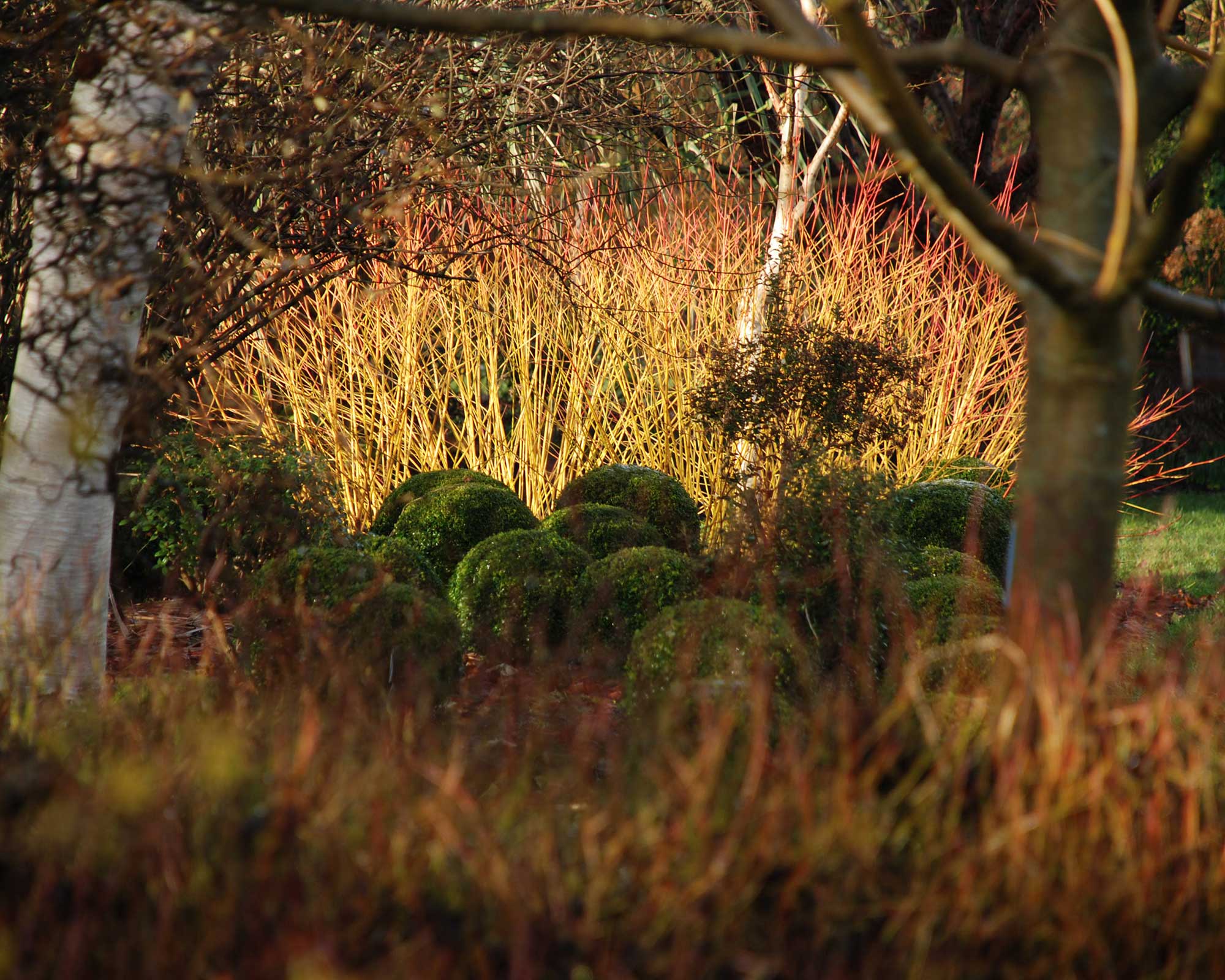
This garden was designed by Lisa Cox, a member of the Society of Garden Designers
You can add real interest and structure to a garden with evergreen shrubs and hedges.
Morris Hankinson, the director at Hopes Grove Nurseries, says, 'While most evergreen hedges and shrubbery are at risk during the colder months, hedges similar to hazel, Christmas trees and sarcococca (otherwise known as sweet box) are less likely to suffer in comparison to boxwood, escallonia, and griselinia hedging.' And as a bonus, sarcococca has deliciously-fragrant winter flowers.
Morris also suggests laurel 'Caucasica' as a hardy evergreen hedging plant, which is less susceptible to frost damage and so will survive the winter with ease.
Smaller shrubs can also be shaped into striking topiary – take these globes, for instance. Ilex crenata (Japanese holly) and yews are particularly good choices for this. You could even try growing them in a container to pep up your winter patio.
5. Create structure with ornamental grasses
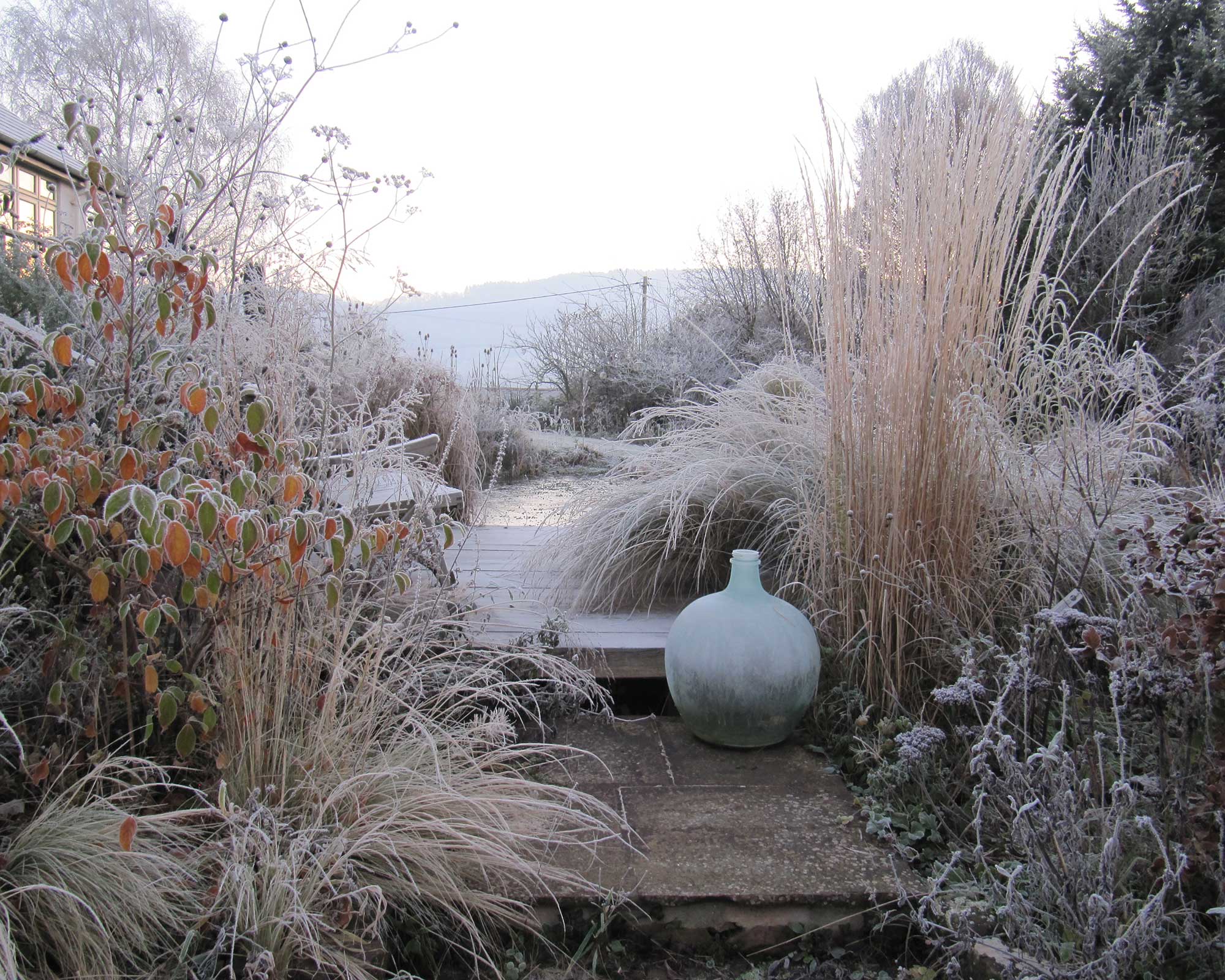
A winter wonderland of a garden, designed by Cheryl Cummings, a member of the Society of Garden Designers
Ornamental grasses are a beautiful addition to the winter garden, offering soft texture, movement, and height. Use to frame a pathway, along the back of a border, or as a subtle screen between zones.
They look especially ethereal once covered in a layer of frost, as demonstrated in this garden above. Try Miscanthus sinensis, or Festuca glauca 'Elijah Blue' for a shot of icy color.
You can learn how to grow ornamental grasses in our feature, while our guide to the different types of ornamental grass will help you select the best variety for your plot.
6. Opt for a cozy garden retreat
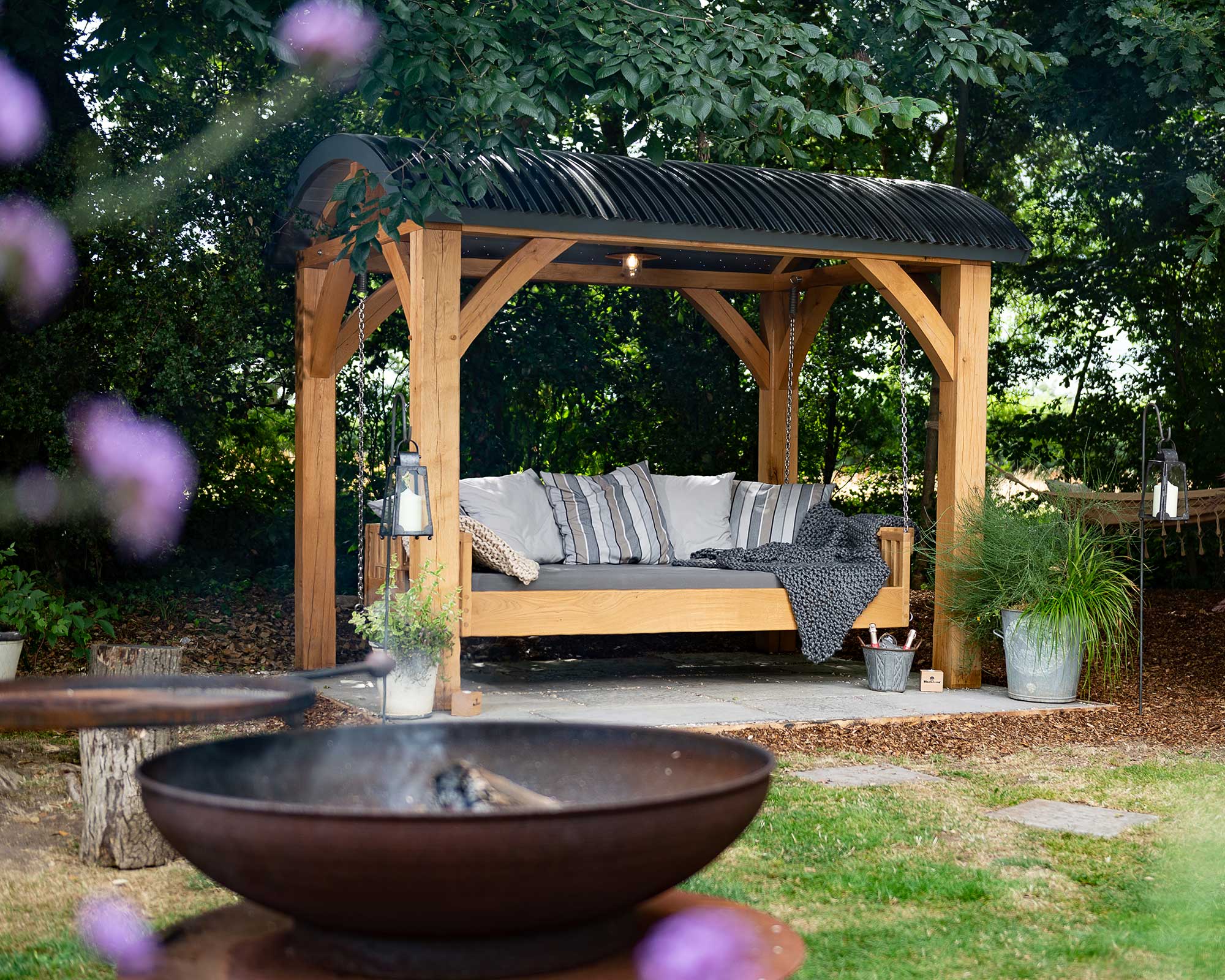
When contemplating your winter landscaping ideas, consider introducing a garden structure such as a pergola, or a covered day bed like this one shown above.
'The beauty of a pergola or day bed is that they can be enjoyed throughout the seasons,' says Martin Young, the founder of Sitting Spiritually. 'Even when the nights grow shorter, and the temperatures start to drop, there's still plenty of comfort and relaxation to be found in a majestic garden centerpiece.
'The secret is to create a cozy and inviting sanctuary within your centerpiece,' he continues, 'one that's kitted out with all the luxury items available to you.'
Weatherproof cushions and soft blankets are a must. And then, 'to capture the essence of a starry winter’s night, use an LED light display within the roof of your structure,' he suggests. Alternatively, add some outdoor-suitable string lights. Feeling the chill? Consider installing a heater that can gently warm your day bed or pergola at the flick of a switch – our patio heater ideas have lots of inspiring styles.
'We'd also recommend positioning some seasonal plants in the surrounding areas,' adds Martin. 'Winter honeysuckle or pansies will provide plenty of color and a welcoming garden environment, no matter the weather.' You can find our picks for the best winter plants for pots in our guide.
7. Elevate your space with lights
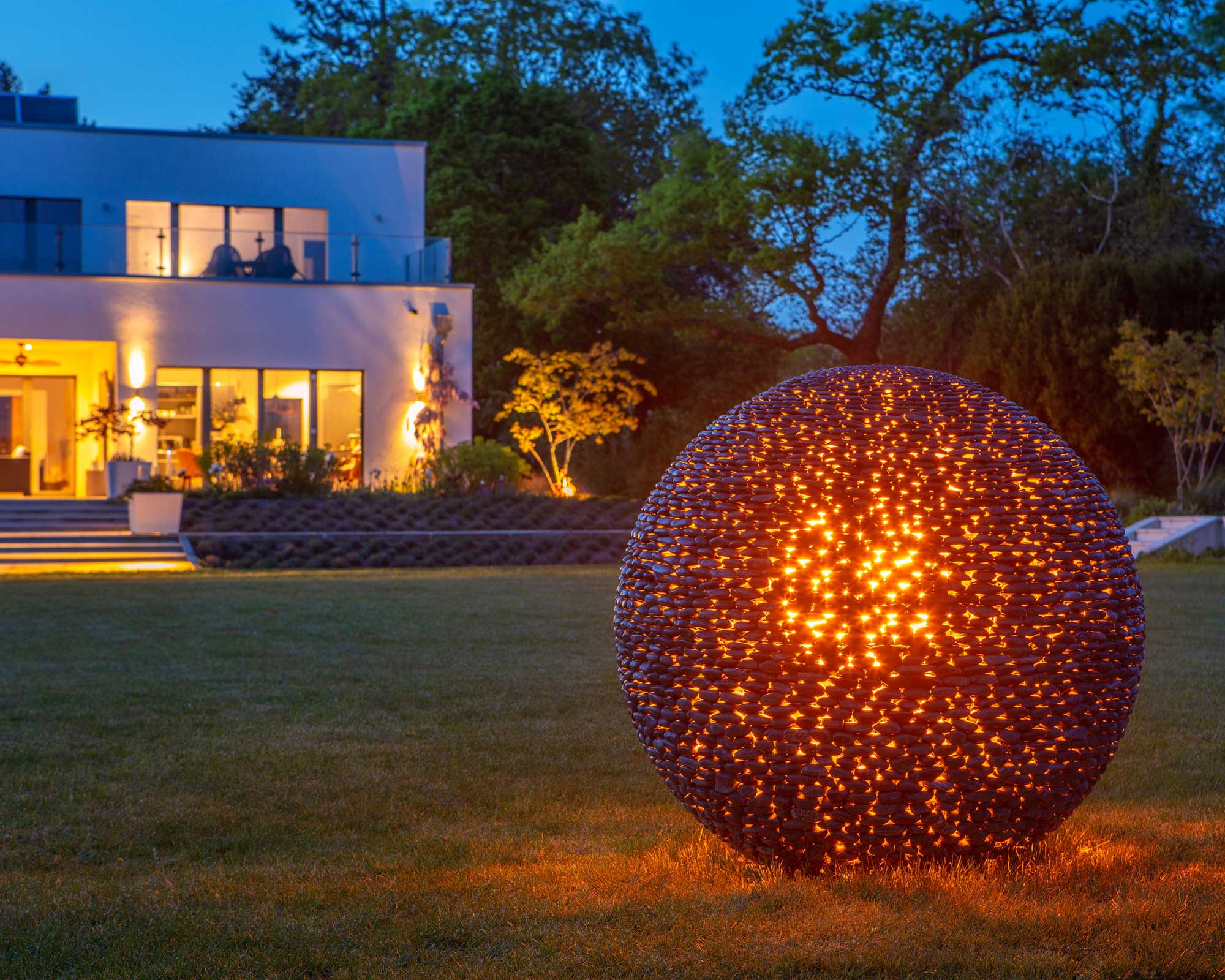
Outdoor lighting can add depth and interest to a winter garden, especially as the evenings draw in. Opt for wall lights to illuminate the exterior of your home, or recessed spotlights in paving, decking, or steps, for a sleek and practical feature. You could also install uplights beneath trees to show off their skeletal winter forms.
But that's not where the possibilities end. 'Sculptures with inbuilt lighting will help to create a mesmerizing discussion piece in your garden,' says sculptor David Harber. 'This will illuminate the garden well into the darker evenings.'
You can find more lighting landscape ideas in our feature.
8. Plant winter blooms
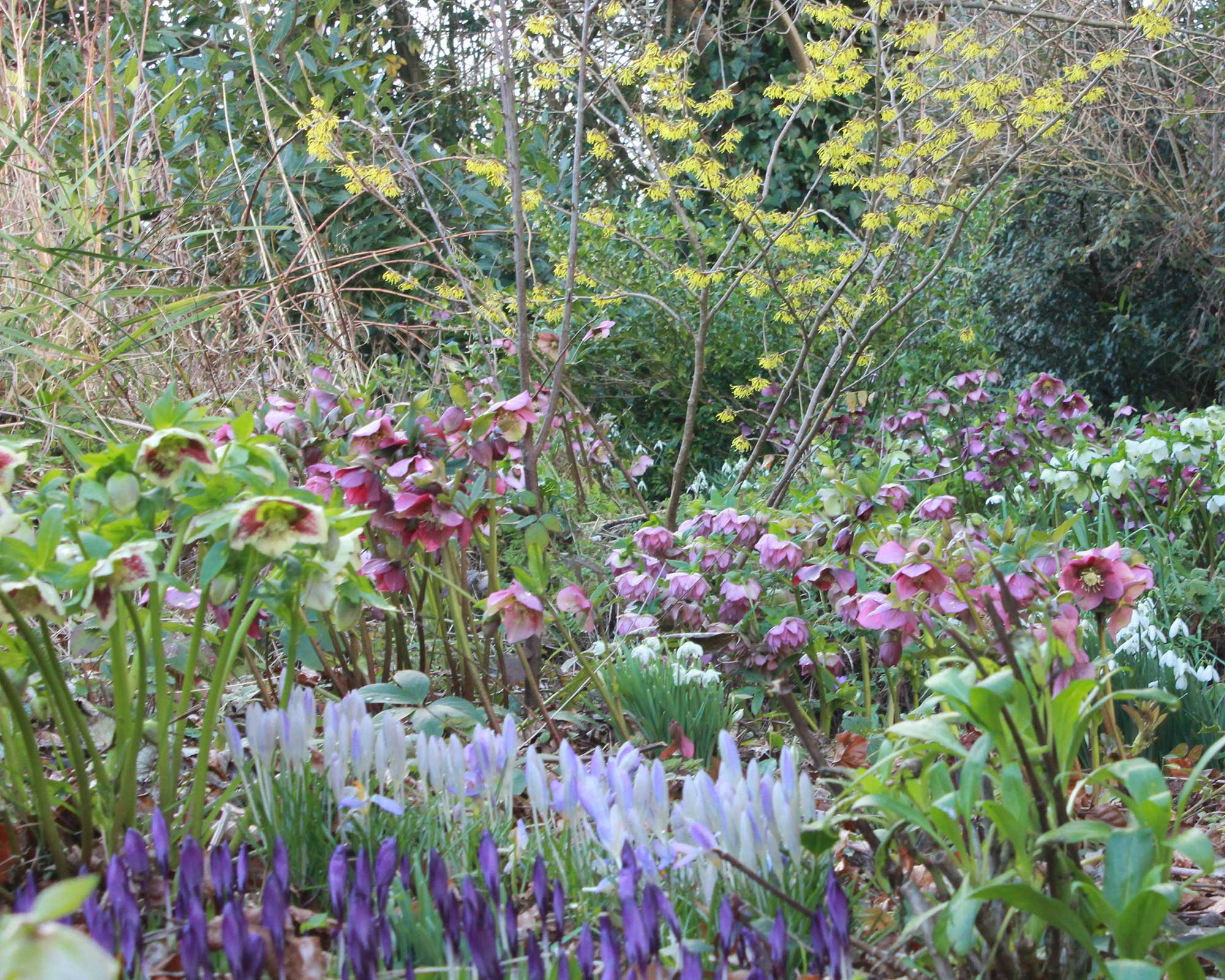
Winter borders in a garden designed by Cheryl Cummings
You might be surprised at how many options there are when it comes to winter flowers.
Hellebores are a classic and look lovely in the border, with their shades of cream, blush, pink and green. Heathers, cyclamen, violas, and winter irises are other good choices. And don't forget about witch hazel, which is one of the best plants for winter color. Some varieties offer a wonderful scent, too.
And then there are early spring bulbs, such as crocus, snowdrops and winter irises, that add a splash of vibrancy before the daffodils and hyacinths emerge. You can learn all about planting bulbs with our guide.
9. Build a stylish seating space
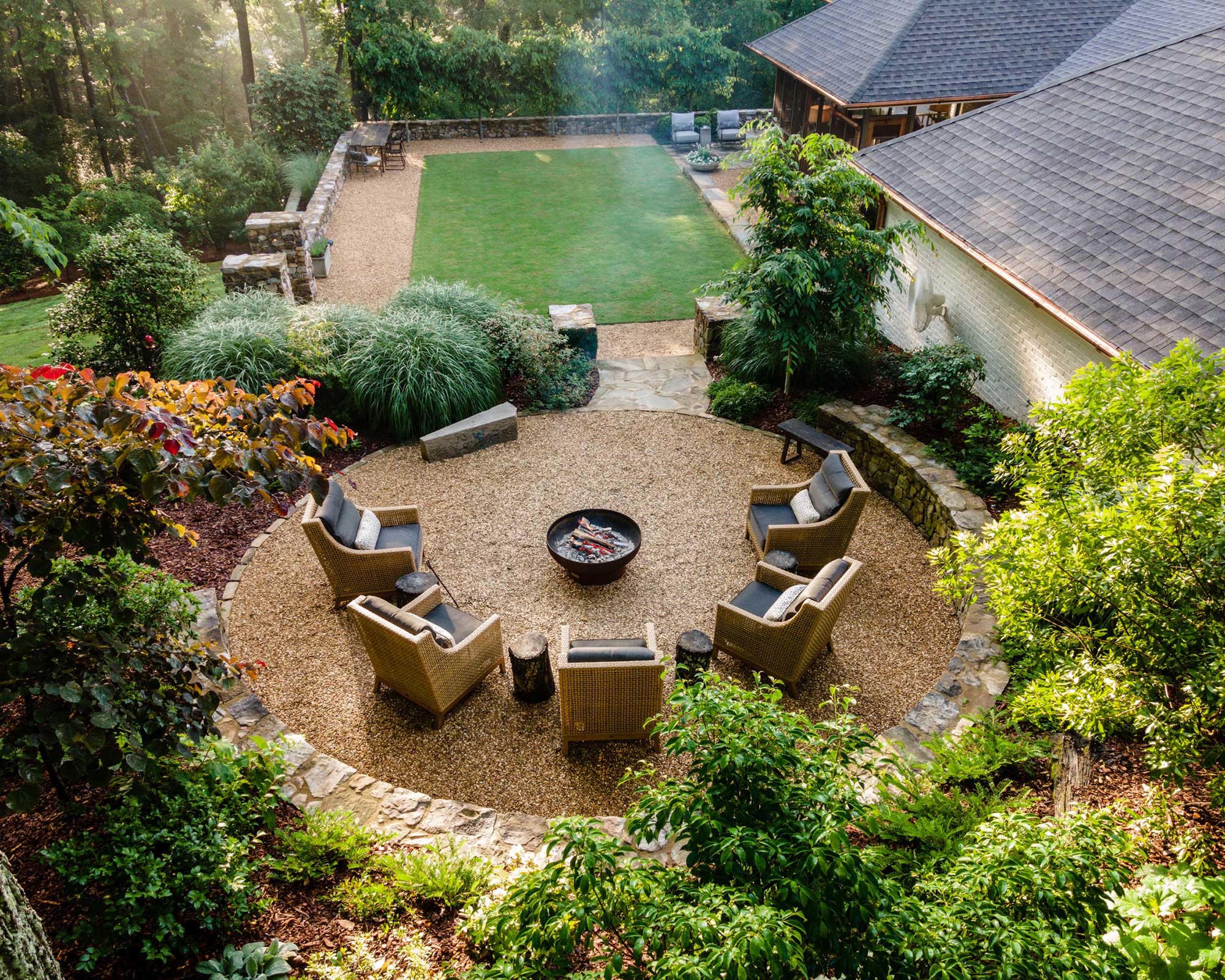
We love the layout in this plot designed by Father Nature Landscapes
'In the summer, plants – with their colors, form and seasonal characters – are the palette and story of the garden,' says David Harber. 'In the winter, it is a different story.'
Although well-chosen flowers and foliage can still play an important part in a cool-season space, the 'bare bones' – the hardscaping – is crucial.
Consider stylish stone walls, gates, paths, and paving – features that will offer structure, texture, and practicality within a more pared-down landscape. Don't overlook the benefits of gravel, either – you won't need to keep off of it during frosts or wet weather like a lawn, it'll soak up all that excess rainwater, and it looks smart, too.
Building an area where you can entertain guests year-round is key if you want to maximize your outdoor space. This circular seating area, surrounded by a raised border and curved walls, is a lovely example, especially with the addition of one of the best fire pits.
10. Add color with berries
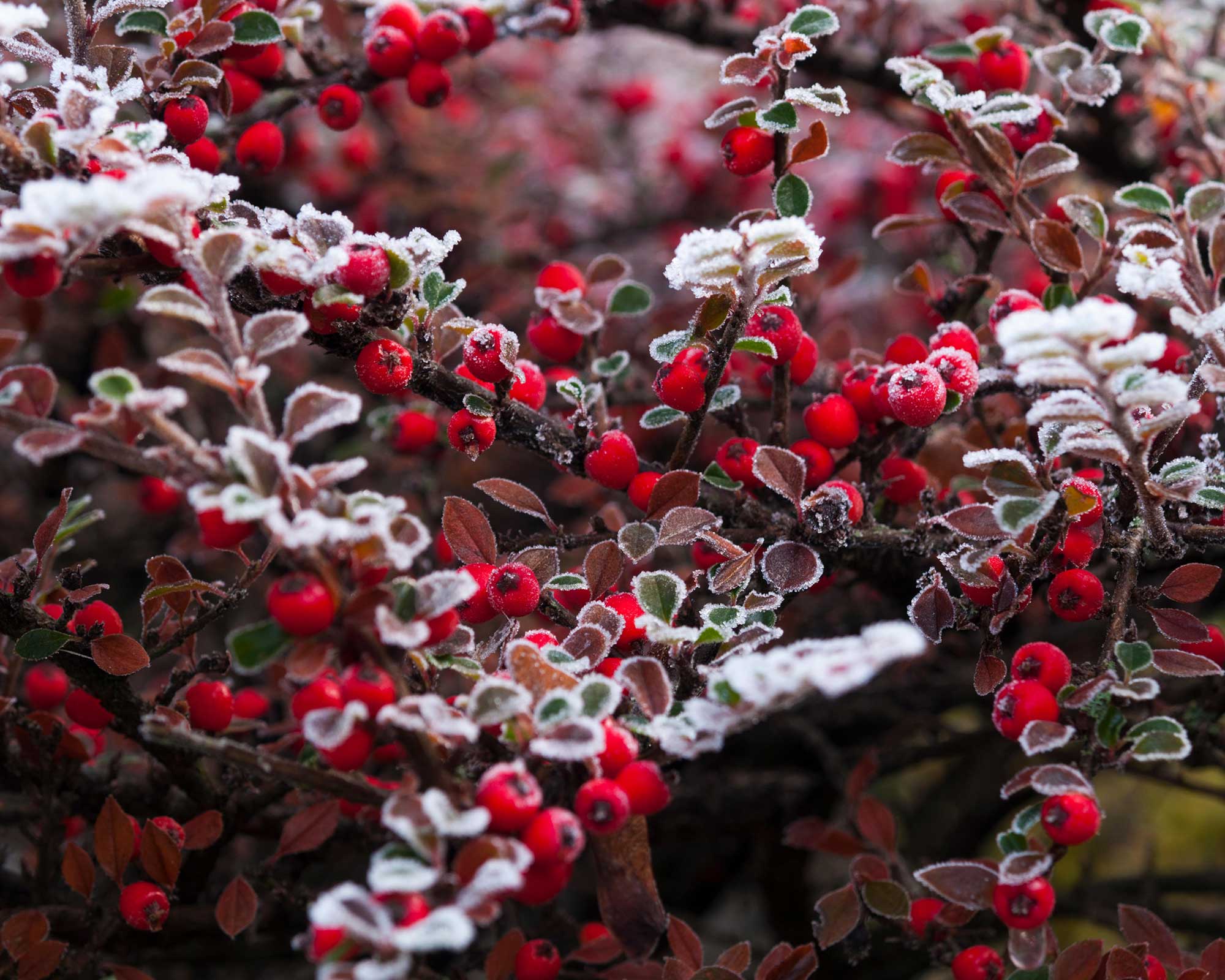
Cotoneaster berries look beautiful in the frost
Another way to bring color into your winter landscaping ideas is to plant shrubs with bright berries. And some are great for attracting birds into your garden, too.
Our favorites include cotoneaster (shown above) and hollies (a Christmas-season classic). We love callicarpa too, also known as beautyberry, which has clusters of vivid purple berries.
What are some more ways to make a yard look better in winter?
Our winter landscaping ideas are all good ways to give your garden a lift between autumn and spring. But there are some other things you can do, to keep your plot looking its best.
For one, you can keep it looking tidy. Sweep up fallen leaves and pop them on the compost heap (or make leaf mould), give your patio a clean, sort out the shed, and give your fences a new lick of paint. In fact, we've got lots more winter jobs in the garden for you to tick off in our guide.
You can also encourage more wildlife into your plot – a lovely way to introduce life and color. And watching birds feed from a kitchen window is a wonderful way to pass the time. You can find plenty of wildlife garden ideas in our feature.
Don't forget about containers, too. Whether you want to plant up some show-stopping bulb lasagne ideas topped with seasonal bedding plants, or want to try out some of the best plants for winter hanging baskets, they're a quick and easy way to brighten up a garden.
Finally, you can also try growing some winter vegetables in your raised beds. And some varieties, like Swiss chard for instance, are beautifully vibrant.
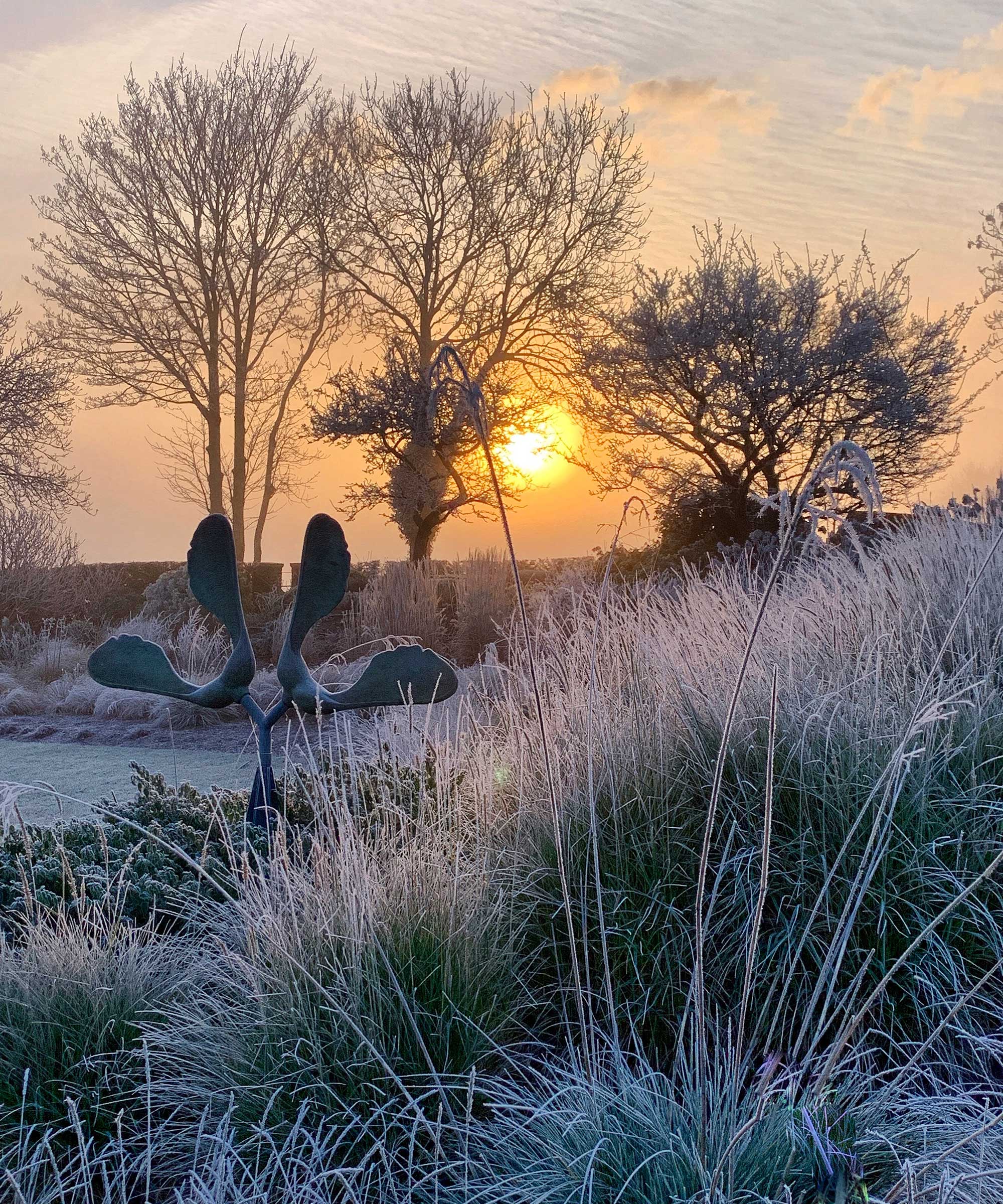
A sculpture tucked amongst grasses looks beautiful in the winter light in this garden designed by Acres Wild, a member of the Society of Garden Designers
What kind of landscaping can be done in the winter?
Winter is a good time to try out some new landscaping ideas.
For one, many trees and plants are dormant, so building around them is less likely to harm them. There will be less wildlife in your garden too, meaning there's a reduced chance of disturbing small creatures.
Turfing, laying a patio, and building a wall can all be done in winter with the right preparation. And if you're bringing in professionals for the work, you'll probably find that waiting lists are shorter, too. What's more, you're less likely to disturb your neighbors with the noise, as they're more likely to be indoors rather than out relaxing around a BBQ.
'Winter is also the ideal time to install any planting features like hedging, trees and fruit gardens as it's the perfect time of year to source bare root plant material,' adds Carol Adams, Head of Biodiversity & Horticulture at Trentham Gardens.

The garden was always a big part of Holly's life growing up, as was the surrounding New Forest where she lived. Her appreciation for the great outdoors has only grown since then. She's been an allotment keeper, a professional gardener, and a botanical illustrator – plants are her passion.
